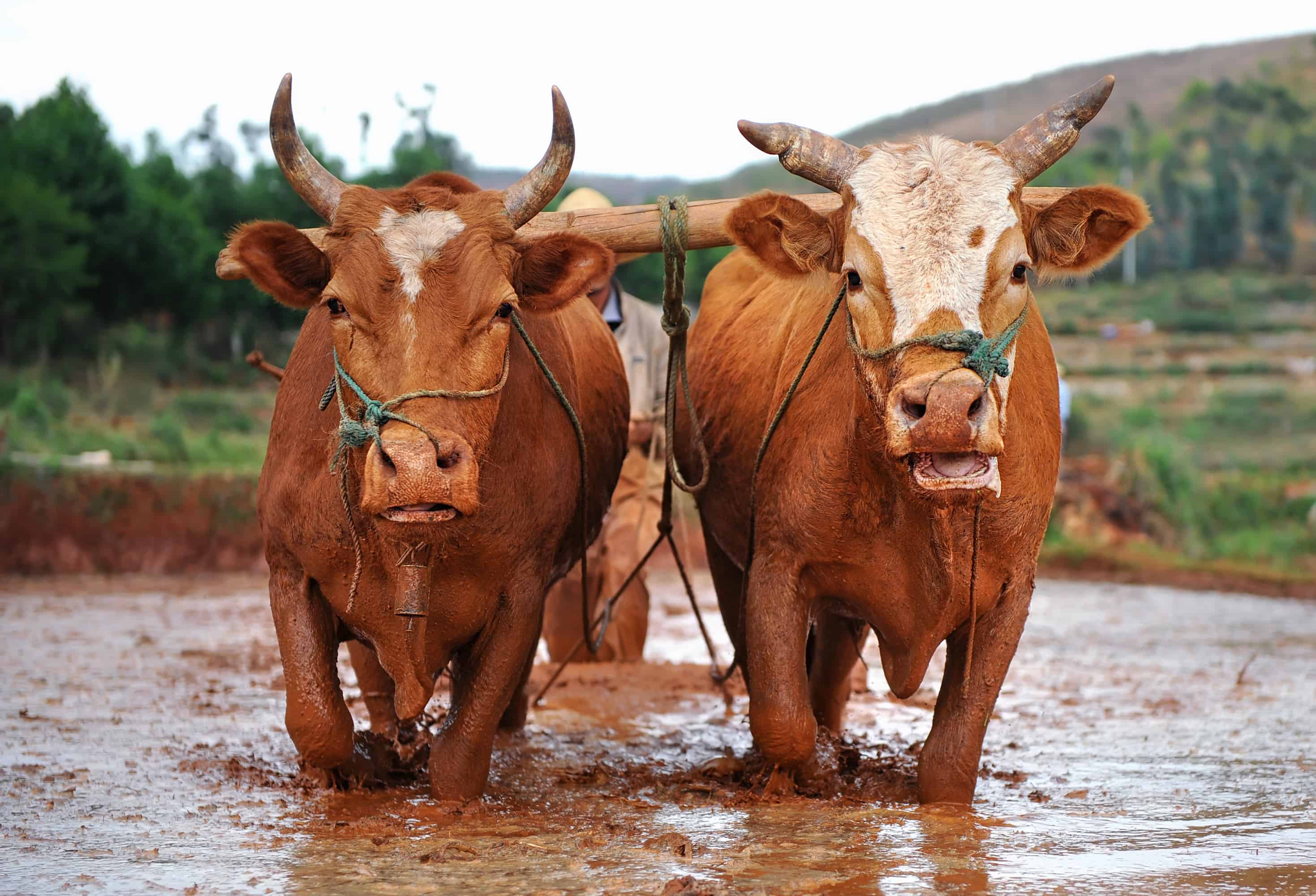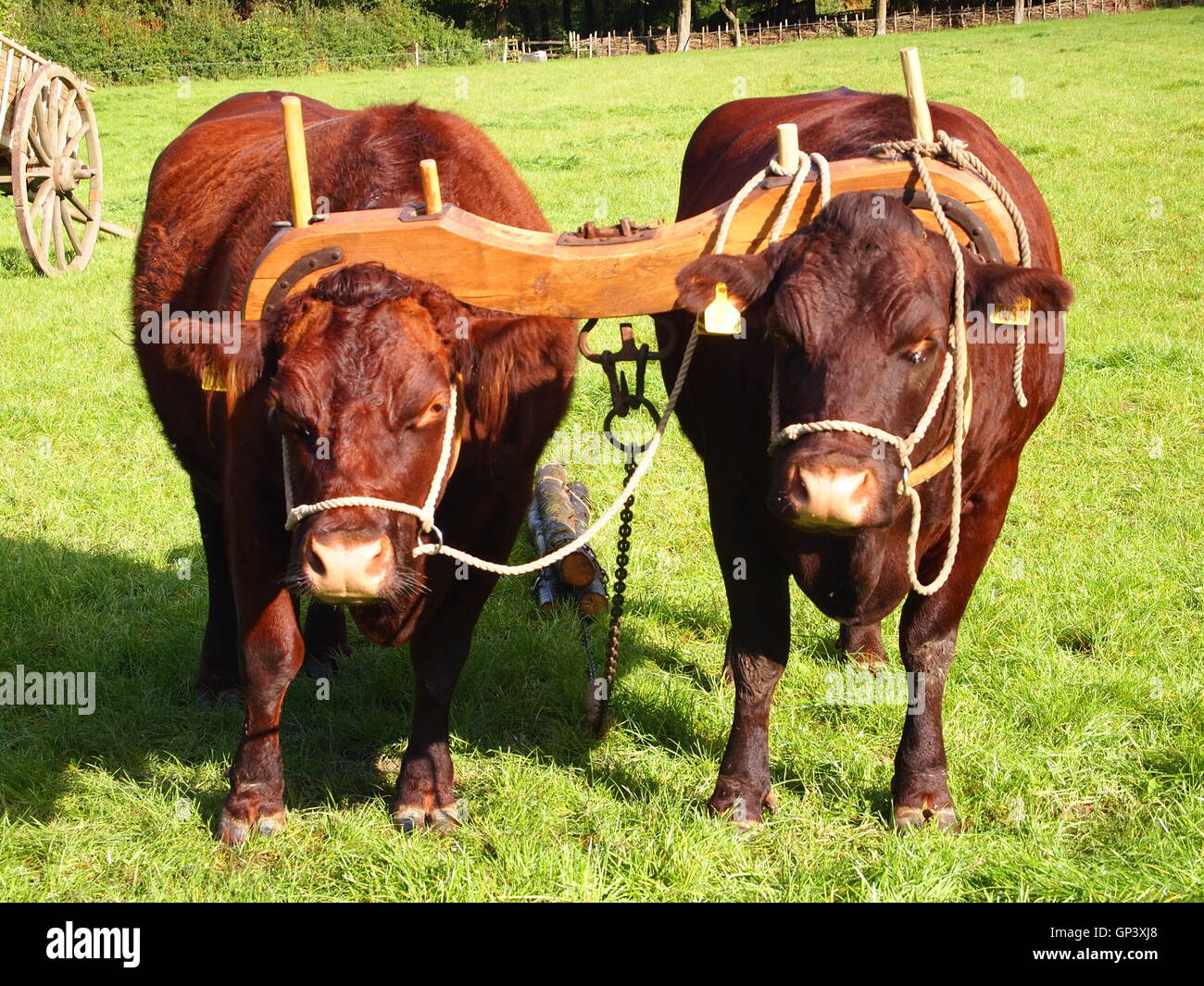The term "oxen dysentery" might immediately conjure images of pixelated hardship on the dusty trails of a classic computer game, but its cultural resonance extends far beyond the digital realm. For many, the phrase is inextricably linked to the iconic educational game, The Oregon Trail, where the health and survival of your virtual oxen were paramount to reaching your destination. This seemingly simple ailment, often a source of both frustration and dark humor in the game, represents a very real and devastating historical challenge faced by pioneers and their invaluable livestock.
While the game simplifies the complexities of pioneer life, the threat of disease, including dysentery in oxen, was a grim reality that shaped the westward expansion of America. Understanding "oxen dysentery" isn't just about reminiscing about a beloved childhood game; it's about appreciating the brutal realities of historical travel, the critical role of working animals, and the enduring impact of seemingly minor health issues on monumental journeys. This article delves into the phenomenon of oxen dysentery, exploring its historical context, its portrayal in popular culture, and the broader implications of animal health for human endeavor, highlighting how a seemingly trivial game mechanic reflects a profound historical truth that could mean the difference between success and utter ruin for those seeking a new life.
Table of Contents
- Oxen Dysentery: A Cultural Phenomenon Beyond the Screen
- The Oregon Trail's Enduring Impact: Teaching Hardship Through Play
- The Historical Reality of Oxen Dysentery
- The Indispensable Role of Oxen in Westward Expansion
- Oxen Dysentery in Modern Contexts: Crosswords and Connections
- Broader Lessons: Animal Health and Human Endeavor
- Preventative Measures and Historical Veterinary Care
- Beyond the Game: The Legacy of Pioneer Challenges
Oxen Dysentery: A Cultural Phenomenon Beyond the Screen
The phrase "oxen dysentery" has a peculiar way of surfacing in modern conversations, often eliciting a knowing chuckle or a shared memory. It's a testament to the pervasive influence of The Oregon Trail that a specific animal ailment from a 1970s educational game could become such a recognizable cultural touchstone. The game's stark portrayal of pioneer life, where death by dysentery (for humans and oxen alike), snakebite, or extreme weather was a constant threat, imprinted itself on generations of players. This shared experience created a unique cultural shorthand, where simply mentioning "oxen dysentery" immediately brings to mind the struggles of the pioneers and the often-unpredictable nature of their journey. It's not just a term; it's a symbol of resilience, hardship, and the sometimes-absurd challenges of survival, as evidenced by its appearance in everything from internet memes to crossword puzzles. The very idea that "everyone could laugh at a joke about dying of dysentery" highlights how the game normalized and even satirized the grim realities of the trail, making concepts like oxen dysentery part of a collective cultural memory. This scene is so familiar that it has permeated our culture, featured in countless internet memes, demonstrating the game's profound and lasting impact on how we perceive historical challenges.
The Oregon Trail's Enduring Impact: Teaching Hardship Through Play
For millions of students, The Oregon Trail was more than just a game; it was an immersive history lesson. It provided a tangible, if simplified, understanding of the immense challenges faced by 19th-century American pioneers. The game's mechanics, particularly those related to resource management and health, directly illustrated the precariousness of life on the trail. The constant threat of "having your oxen die of dysentery" or "watching your children be wiped out by extreme frostbite" was a harsh but effective way to convey the brutal realities that pioneers endured. It taught players that success wasn't guaranteed, and that careful planning, resourcefulness, and a bit of luck were essential. The game’s genius lay in its ability to make abstract historical concepts, like the importance of oxen or the dangers of disease, feel immediate and personal. It fostered a sense of empathy for those who undertook such arduous journeys, ensuring that terms like "oxen dysentery" became synonymous with historical struggle. As Driscoll, an assistant professor of media studies at the University of Virginia, noted, "every kid in class had an opinion on the best strategy to use," showing how deeply the game engaged its players with the historical context.
Game Mechanics and Oxen Survival
In The Oregon Trail, the oxen were not merely background elements; they were the engine of your entire expedition. The game meticulously simulated the need to "initially outfit your party at the general store spending a fixed amount of money... on oxen, clothing, food, ammunition and spare parts to repair your Conestoga wagon." The number and health of your oxen directly dictated your pace and ability to overcome obstacles. A common strategy discussion among players revolved around "the right number of oxen to buy before heading out." Too few, and your progress would be painfully slow; too many, and you'd deplete your precious funds, potentially leading to other resource shortages. The game also introduced environmental factors that directly impacted oxen health. The crucial decision of "when to depart" was paramount: "Leave too early and there will be no grass for your oxen, Leave too late and you run into winter." These choices, often leading to the demise of your oxen from starvation or disease, including dysentery, underscored the delicate balance pioneers had to maintain. The game effectively demonstrated that the well-being of your oxen was intrinsically linked to your party's survival, making "oxen dysentery" a dreaded outcome that could derail your entire journey.
Strategic Decisions and Their Consequences
Beyond purchasing supplies, players of The Oregon Trail faced a continuous stream of strategic decisions, many of which directly impacted their oxen. River crossings, for instance, were a major point of tension. "Therefore, as the overlanders reached a river crossing, they needed to make an assessment based on the current conditions." If the river was "low and slow, then the river was typically forded," meaning "the oxen pulled the wagon across the river, with the wagon wheels rolling on the river bottom." However, if the river was too deep or swift, attempting to ford it could lead to disastrous consequences, including losing oxen, supplies, or even party members. The game’s four answers often associated with the game are dysentery, ford, hunt, and oxen, highlighting these key survival elements. The game's emphasis on these practical challenges, from managing food supplies to navigating treacherous terrain, highlighted the constant vigilance required. The threat of diseases like "oxen dysentery" was another layer of unpredictability, forcing players to make difficult choices about rest, pace, and resource allocation, all in an effort to keep their vital draft animals alive and healthy. These decisions mirrored the real-life dilemmas pioneers faced, where a single misstep could lead to catastrophe.
The Historical Reality of Oxen Dysentery
While The Oregon Trail provides a simplified glimpse, the historical reality of diseases like dysentery among livestock, particularly oxen, was far more complex and devastating. Pioneers relied almost entirely on their draft animals for transportation, plowing, and even sometimes as a food source in dire circumstances. The loss of oxen, whether to disease, injury, or exhaustion, could spell the end of a family's westward journey, leaving them stranded and vulnerable. Dysentery, a severe infection of the intestines causing bloody diarrhea, dehydration, and weakness, would have been particularly dangerous for animals undergoing strenuous physical exertion and often subsisting on limited, sometimes contaminated, forage and water. The unsanitary conditions of long journeys, communal grazing areas, and lack of veterinary knowledge would have created fertile ground for outbreaks, making "oxen dysentery" a very real and terrifying threat. The sheer scale of the migration meant that thousands of animals were subjected to conditions ripe for disease transmission, leading to widespread suffering and economic loss.
Causes and Symptoms in Real Oxen
In real-world bovine health, dysentery can be caused by various pathogens, including bacteria (like *Salmonella* or *E. coli*) and protozoa (like *Coccidia*). For oxen on the Oregon Trail, the primary culprits would likely have been bacterial infections spread through contaminated water sources or feed. Overlanders often shared water sources, which could quickly become fouled by animal waste, facilitating the spread of pathogens. Symptoms in oxen would mirror those in humans: severe diarrhea, often bloody or mucous-filled, leading to rapid dehydration, weakness, and emaciation. An animal suffering from dysentery would quickly lose its strength, making it unable to pull a heavy wagon. This would not only slow down the entire wagon train but could also lead to the animal's death. The lack of effective treatments, antibiotics, or even basic veterinary care on the trail meant that once an ox contracted dysentery, its chances of recovery were slim, and the disease could easily spread to other animals in the herd, compounding the disaster. The phrase "oxen dysentery" therefore encapsulates a profound and life-threatening challenge for the pioneers, directly impacting their ability to continue their arduous journey.
Impact on Pioneer Journeys and Livelihoods
The death of an ox from dysentery or any other ailment was a catastrophic event for a pioneer family. Oxen were expensive, often representing a significant portion of a family's initial investment, sometimes costing as much as a small plot of land. Losing one meant a reduction in pulling power, forcing families to abandon precious supplies, slow their pace dramatically, or even halt their journey entirely. In some cases, families might have to trade valuable possessions for another ox, if one was even available, further depleting their already limited resources. The loss of multiple oxen due to an outbreak of "oxen dysentery" could force an entire family or even a small group to turn back, effectively ending their dreams of a new life in the West. This highlights the immense vulnerability of pioneers to animal health issues and underscores how a seemingly simple ailment could have profound, life-altering consequences, affecting their "money or their life" in the most literal sense. The pioneers "had it hard," especially when they had to live off whatever they stockpiled for the long trip from St. Louis, and the loss of an ox meant losing a crucial part of that stockpile's transport.
The Indispensable Role of Oxen in Westward Expansion
Beyond the specific threat of "oxen dysentery," it's crucial to understand the broader significance of oxen in the context of westward expansion. These powerful, docile, and resilient animals were the workhorses of the American frontier. Unlike horses, oxen were better suited for the heavy, sustained pulling required for covered wagons over long distances and rough terrain. They were less prone to panic, more tolerant of harsh conditions, and could subsist on poorer quality forage, making them ideal for the challenging conditions of the trail. Their slow but


